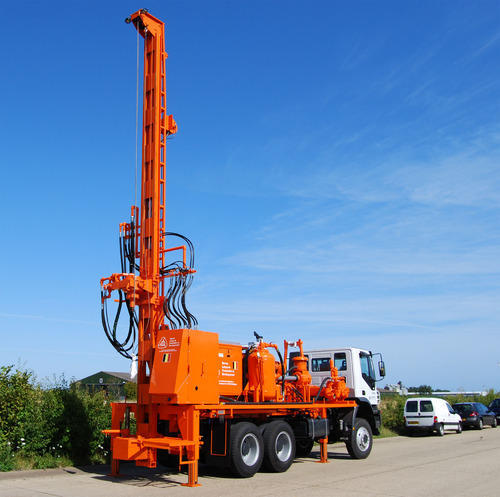Boreholes and trees – why drilling supervision matters

About 1 billion people in rural areas rely on boreholes (mostly fitted with handpumps) for their water supply. Another 300 million in small towns and cities get their domestic water from boreholes.
Someone [3] once defined a tree as “a big plant with a stick up the middle”. Using this analogy, a borehole is “a long thin hole in the ground which produces water”. But of course just as trees are a bit more complicated than the definition would suggest, and just as trees come in all shapes and sizes, so too boreholes are more than ‘long thin holes …’. No two boreholes are quite the same.
If I wish to plant a tree and get fruit or timber from it sometime in the future, then I need to choose the right species, plant it in the right place, and nurture it until it becomes established. So too if I want to construct a borehole which will deliver clean water over both the short-term and the long-term, I need to choose its location with care, design it properly and ensure that it is drilled and finished straight and true.
Trees are visible – they stick up above ground – so it is relatively easy to judge their health. We all know at least a little about trees, because we encounter them every day. Boreholes on the other hand are almost entirely invisible below ground, and they tend to be constructed using noisy dirty machines operated by big burly drillers, who may not always welcome oversight and supervision by the person or organisation that is paying for their work. Furthermore, the client may simply not know what to look for on a well drilling site. And yet that supervision is vital. I would not hand over close to $10,000 to any driller, however trusted and respected, to go and drill me a borehole and then report back that he was successful in his work, unless either I or my representative were there in person watching, measuring, observing and assuring myself of the quality and effectiveness of his work.
The consequence of no-supervision or inadequate supervision is that some drillers (thankfully not all), cut corners, save themselves money, and not only let down the client, but more importantly let down those who needed the water in the first place. But by the time the poor performance of the borehole is discovered, the driller and the client organisation have moved on to other places, other contracts.
All of this background is to explain the importance of drilling supervision, and to add that very little training is available for the water well drilling supervisor. What is his/her role? What should (s)he do while on a drilling site? What observations, measurements and reports should be made? It was to address these questions, both in theory and, more importantly, in practice, that WaterAid’s Technical Support Unit teamed up with Cranfield University’s MSc programme in Community Water and Sanitation to present a week-long course on drilling supervision in May 2012.